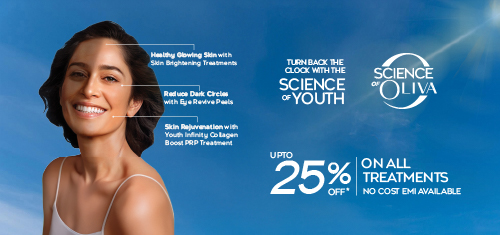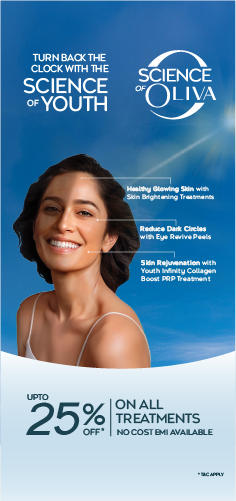In This Article
How To Remove Pigmentation From Face Permanently & Naturally At Home?
Are the dark spots on your face, neck and chest bothering you? Is pigmentation giving you an uneven skin tone and texture? If you are wondering how to remove pigmentation from face permanently, you are not alone. There are many ways to overcome this harmless yet bothersome skin health concern. Find out what hyperpigmentation is, its causes, and how to remove pigmentation from face. This read discusses some effective home remedies for pigmentation, and some useful tips to prevent pigmentation.
In This Article
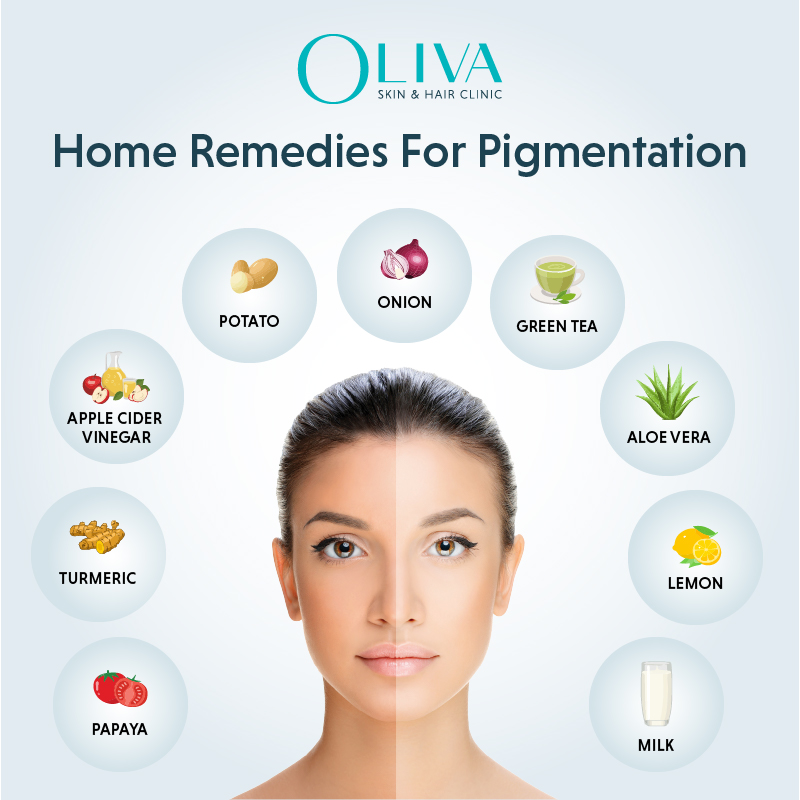
Highlights
- Hormonal changes during pregnancy often lead to hyperpigmentation.[1]
- Women are more prone to hyperpigmentation as compared to men.[2]
- Hyperpigmentation may also result from inflammatory skin conditions like acne, eczema, or psoriasis. It is called post-inflammatory hyperpigmentation (PIH).[3]
- People with darker skin tones have been seen to display more hyperpigmentation disorders than those with lighter skin tones.[4]
What Causes Hyperpigmentation?
Melanin is a natural pigment that gives the skin, hair and eyes their colour. When melanin levels increase in the skin, it leads to hyperpigmentation. Many reasons contribute to an increase in the production of melanin. Listed below are some of the most prominent ones:
-
Sun exposure:
Exposure to sunlight prompts the skin to produce excessive melanin, causing hyperpigmentation. Once pigmentation starts, it can worsen with sun exposure, leading to sun spots, post-inflammatory hyperpigmentation, and melasma.
-
Hormones:
Melasma is a type of hyperpigmentation caused by hormonal imbalances. It is common in women and occurs when progesterone and estrogen, the female sex hormones, stimulate the overproduction of melanin upon sun exposure. Additionally, melasma can be a side effect of hormone treatments.
-
Age:
As we age, the number of melanocytes, the cells responsible for producing melanin, decreases. However, the remaining melanocytes increase in size and focus more on distribution. Consequently, we see the appearance of age spots, especially in those individuals over 40.
-
Inflammation and skin injuries:
Often, skin injuries, such as psoriasis, acne, dermatitis, cuts, or burns, result in post-inflammatory hyperpigmentation. This leaves behind dark, sensitive, and pigmented skin even after the original wound heals.
-
Disease and medication:
Some diseases or strong medications for an underlying condition can cause hyperpigmentation. Gastrointestinal diseases, autoimmune disorders and metabolic dysfunctions often show pigmentation as a symptom. Additionally, the use of strong antibiotics, chemotherapy drugs, anti-malaria medicines, or seizure medication can trigger hyperpigmentation.
While there could be many reasons for this, it is important to understand that you can reverse this damage. Consult an expert dermatologist to explore some of the best clinical pigmentation treatment options. Alternatively, try effective pigmentation treatment at home, discussed in detail below.
How To Remove Pigmentation From Face Permanently?
If you are wondering how to remove pigmentation from face permanently naturally at home, then here are some great home remedies for pigmentation on face you can try:
-
Aloe Vera:
How Does Aloe Vera Gel Help in Treating Pigmentation?
Aloe vera contains aloin, a natural depigmenting compound. It helps lighten skin tone and reduce pigmentation.
How to Use Aloe Vera Gel to Remove Pigmentation?
You can apply aloe vera gel directly to your face or add it to your homemade masks.
Direct Application
- Take out fresh aloe vera gel from a stalk.
- Apply it to the pigmented areas before bed.
- Leave it overnight and wash it with warm water in the morning.
- Repeat the process daily until you see the results.
Mix with Honey
- Mix some aloe vera gel with a teaspoon of honey.
- Apply this mixture all over your face.
- Leave it to dry for 20 minutes, then rinse it with water.
-
Apple Cider Vinegar:
How Does Apple Cider Vinegar Help in Treating Pigmentation?
Apple cider vinegar contains acetic acid. It helps lighten pigmentation and improves overall skin texture.
How to Use Apple Cider Vinegar to Remove Pigmentation?
For the best possible results, you can use apple cider vinegar in diluted form or mix it with other natural ingredients.
Diluted Solution
- Take 1 tbsp of apple cider vinegar and mix it with an equal amount of water.
- Apply the diluted solution to the pigmented areas.
- Leave it for a few minutes before you rinse with lukewarm water.
- Repeat this process twice daily until you see the desired results.
Apple Cider Vinegar and Honey
- Take 1 tbsp of apple cider vinegar.
- Add 1 tbsp of honey to it and mix well.
- Apply the paste to your face.
- Leave it for 15 minutes, then rinse properly with water.
-
Onion:
How Does Onion Help in Treating Pigmentation?
Onions are rich in antioxidants and vitamins that help reduce pigmentation and rejuvenate the skin.
How to Use Onion to Remove Pigmentation?
You can use either onion juice or an onion mask to reduce pigmentation.
Onion Juice
- Extract some onion juice and apply it to the pigmented areas.
- Let it rest for 10-15 minutes, and rinse properly with water.
Onion and Honey Mask
- Take some onion juice and mix it with honey.
- Apply it to the face.
- Leave it for 20 minutes and then rinse with water.
-
Milk:
How Does Milk Help in Treating Pigmentation?
Milk contains lactic acid, which gently exfoliates and lightens the skin, reducing pigmentation.
How to Use Milk to Remove Pigmentation?
You can apply milk directly to the pigmented areas or mix it with other ingredients to prepare a mask.
Milk
- Soak a cotton ball in milk and apply it to pigmented areas.
- Leave it for 15 minutes, and then rinse with water.
- You can repeat this process daily for the best results.
Milk and Honey Mask
- Take milk and honey in equal quantities and mix them.
- Apply it to the face.
- Leave it for 20 minutes, and rinse with water.
-
Green Tea:
How Does Green Tea Help in Treating Pigmentation?
Green tea contains antioxidants that help reduce pigmentation and protect the skin from damage.
How to Use Green Tea to Remove Pigmentation?
You can make green tea homemade face pack or mask and apply it as directed below:
Green Tea Rinse
- Brew green tea.
- Let it cool, and use it as a rinse for your face.
Green Tea and Honey Mask
- Mix brewed green tea with honey
- Apply the mixture to the face.
- Leave it for 15 minutes, and rinse with water.
-
Lemon:
How Does Lemon Help in Treating Pigmentation?
Lemon juice is rich in vitamin C, which has natural bleaching properties that can lighten pigmentation.
How to Use Lemon to Remove Pigmentation?
You can apply lemon juice directly to the pigmented areas or mix it with other ingredients to prepare a mask.
Lemon Juice
- Apply fresh lemon juice to pigmented areas.
- Let it rest for 10 minutes, and then rinse with water.
Lemon and Honey Mask
- Mix lemon juice with honey.
- Apply the mixture to the face.
- Leave it for 15 minutes, and then rinse with water.
-
Tomato:
How Does Tomato Help in Treating Pigmentation?
Tomatoes contain lycopene, which helps lighten skin and reduce pigmentation.
How to Use Tomato to Remove Pigmentation?
You can apply either tomato pulp directly or prepare a facemask with tomato and use it on your face.
Tomato Pulp
- Apply fresh tomato pulp to the face.
- Leave it for 20 minutes, and then rinse with water.
Tomato and Lemon Mask:
- Squeeze half a tomato to extract the juice.
- Mix the tomato juice with lemon juice.
- Apply this mixture to the face.
- Leave it for 15 minutes, and then rinse with warm water.
-
Turmeric:
How Does Turmeric Help in Treating Pigmentation?
Turmeric has anti-inflammatory and antioxidant properties that lighten pigmentation and improve skin tone.
How to Use Turmeric to Remove Pigmentation?
You can use turmeric paste or prepare a facemask with turmeric and apply it for the best results.
Turmeric Paste
- Mix some turmeric powder with milk to form a paste.
- Apply this paste to pigmented areas.
- Leave it for 15 minutes, and then rinse with water.
Turmeric and Honey Mask
- Take some turmeric powder and some honey to it.
- Apply it to the face.
- Leave it for 20 minutes, and then rinse with water.
-
Papaya:
How Does Papaya Help in Treating Pigmentation?
Papaya contains enzymes like papain that exfoliate and lighten the skin, reducing pigmentation.
How to Use Papaya to Remove Pigmentation?
You can apply either papaya pulp directly or prepare a facemask with papaya and use it on your face.
Papaya Pulp
- Take ripened papaya and mash it.
- Apply the mashed papaya pulp to the face.
- Leave it for 20 minutes, and then rinse with warm water.
Papaya and Honey Mask
- Take some papaya pulp and mix it with honey.
- Apply this mixture to the face.
- Leave it for 15 minutes, then rinse with warm water.
-
Potato:
How Does Potato Help in Treating Pigmentation?
Potatoes contain natural bleaching agents that help lighten pigmentation.
How to Use Potato to Remove Pigmentation?
You can use potato slices or potato juice as directed below:
Potato Slices
- Take a potato and cut it into thin slices.
- Rub these potato slices on pigmented areas.
- Repeat it for about 20 minutes, and then rinse with water.
Potato Juice
- Take a potato and extract juice from it.
- Apply this potato juice to the face.
- Leave it for 15 minutes, and then rinse with water.
-
Liquorice:
How Does Liquorice Help in Treating Pigmentation?
Liquorice contains glabridin, which inhibits pigmentation and helps lighten the skin.
How to Use Liquorice to Remove Pigmentation?
Using liquorice, the natural skin lightening agent, is very simple. Follow the directions as mentioned below:
Liquorice Extract
- Take liquorice extract and apply it to pigmented areas.
- Leave it for 15 minutes, and then rinse with water.
Liquorice and Aloe Vera Gel
- Take liquorice extract and mix it with aloe vera gel.
- Apply the mixture to the face.
- Leave it for 20 minutes, and then rinse with water.
-
Sandalwood:
How Does Sandalwood Help in Treating Pigmentation?
Sandalwood contains antioxidants and natural skin lightening properties that help reduce pigmentation and even out skin tone.
How to Use Sandalwood to Remove Pigmentation?
Using sandalwood to lighten pigmentation is an easy process. You can apply it as a paste or a facemask on your face.
Sandalwood Paste
- Take some sandalwood powder and mix it with rose water to form a paste.
- Apply this paste to the face.
- Leave it for 20 minutes, and then rinse with water.
Sandalwood and Turmeric Mask
- Take some sandalwood powder. Add some turmeric powder and milk to it to form a paste.
- Apply the paste to the face.
- Leave it for 15 minutes, and then rinse with water.
-
Vitamin C:
How Does Vitamin C Help in Treating Pigmentation?
Vitamin C is an antioxidant that lightens pigmentation and boosts collagen production.
How to Use Vitamin C to Remove Pigmentation?
Follow the directions given below to use vitamin C:
Vitamin C Serum
- Vitamin C serum is available in the market.
- You can apply it to pigmented areas.
- Follow this process daily until you see the desired results.
Vitamin C and Aloe Vera Gel:
- Take vitamin C powder and mix it with aloe vera gel.
- Apply this mixture to the face.
- Leave it for 20 minutes, and then rinse with water.
-
Black Tea Water:
How Does Black Tea Water Help in Treating Pigmentation?
Black tea water contains antioxidants that can reduce pigmentation and protect the skin.
How to Use Black Tea Water to Remove Pigmentation?
Wondering how to use black tea water? Follow the directions given below:
Tea Rinse
- Brew strong black tea.
- Allow it to cool, and use it as a rinse for your face.
Tea and Lemon Pads
- Brew black tea and some lemon juice to it.
- Soak cotton pads in this mixture and place them over pigmented areas.
- Leave for 15 minutes, and then rinse with water.
-
Cucumber:
How Does Cucumber Help in Treating Pigmentation?
Cucumber has anti-inflammatory properties and is rich in antioxidants. It hydrates the skin, brightens the skin tone and reduces pigmentation.
How to Use Cucumber to Remove Pigmentation?
You can use cucumber slices or cucumber juice as directed below:
Cucumber Slices
- Take a cucumber and cut it into thin slices.
- Place chilled cucumber slices on pigmented areas.
- Leave it for 15 minutes, and then rinse with water.
Cucumber Juice
- Take a cucumber and extract juice from it.
- Apply the cucumber juice to the face.
- Leave it for 20 minutes, and then rinse with water.
-
Oatmeal:
How Does Oatmeal Help in Treating Pigmentation?
Oatmeal contains antioxidant properties. It has compounds called saponins, known as natural cleansers. They help exfoliate the skin and remove dead skin cells, reducing pigmentation.
How to Use Oatmeal to Remove Pigmentation?
You can use oatmeal as a scrub or facemask to lighten pigmentation. Follow the directions given below:
Oatmeal Scrub
- Mix oatmeal with milk to form a scrub
- Use this scrub to exfoliate the face gently.
- Now rinse with water.
Oatmeal Mask
- Take oatmeal and add some honey to it to form a paste.
- Apply this mask to the face.
- Leave it for 15 minutes before rinsing it with water.
-
Lentils:
How Does Lentil Help in Treating Pigmentation?
Lentils contain nutrients that help exfoliate and lighten the skin, reducing pigmentation.
How to Use Lentil to Remove Pigmentation?
Want to know how to use lentils to lighten pigmentation? Follow the directions given below:
Lentil Paste
- Soak lentils overnight.
- Grind them into a paste.
- Apply this paste to the face.
- Leave it for 20 minutes before rinsing it with water.
Lentil and Turmeric Mask
- Take lentil paste and mix some turmeric in it.
- Apply this mixture to the face.
- Leave it for 15 minutes, and then rinse with water.
-
Yoghurt:
How Does Yoghurt Help in Treating Pigmentation?
Yoghurt contains lactic acid, which exfoliates and lightens the skin, reducing pigmentation.
How to Use Yoghurt to Remove Pigmentation?
Using yoghurt is very simple. Follow the directions given below:
Yoghurt Mask
- Apply plain yoghurt to the face.
- Leave for 20 minutes, and then rinse with water.
Yoghurt and Honey Mask
- Mix yoghurt with honey.
- Apply this mixture to the face.
- Leave it for 15 minutes before rinsing it with water.
-
Almond Oil:
How Does Almond Oil Help in Treating Pigmentation?
Almond oil is rich in vitamin E, which nourishes and lightens the skin, reducing pigmentation.
How to Use Almond Oil to Remove Pigmentation?
Wondering how to use almond oil? Below are the directions to follow:
Night Treatment
- Massage almond oil into pigmented areas before bed.
- Leave it overnight.
- Rinse with water in the morning.
Almond Oil and Honey Mask
- Mix almond oil with honey.
- Apply it to the face.
- Leave it for 20 minutes, and then rinse with water.
-
Mulberry:
How Does Mulberry Help in Treating Pigmentation?
Mulberry extract contains arbutin, which inhibits melanin production and lightens pigmentation.
How to Use Mulberry to Remove Pigmentation?
Below are the directions for use.
Mulberry Extract
- Take mulberry extract and apply it to pigmented areas.
- Leave it for 15 minutes, then rinse with water.
Mulberry and Aloe Vera Gel
- Take mulberry extract and mix it with some aloe vera gel.
- Apply the mixture to the face.
- Leave it for 20 minutes before rinsing with water.
-
Orange Peel:
How Does Orange Peel Help in Treating Pigmentation?
Orange peel is rich in vitamin C, which helps lighten pigmentation and brighten the skin. You can use orange peel in different ways to reduce pigmentation.
How to Use Orange Peel to Remove Pigmentation?
Using orange peel is very easy. Below are some easy steps to follow:
Orange Peel Powder Mask
- Mix orange peel powder with Yoghurt to form a paste.
- Apply this paste to the face.
- Leave it for 20 minutes, and then rinse with water.
Orange Peel and Honey Mask
- Take orange peel powder and some honey to it.
- Apply this mixture to the face.
- Leave for 15 minutes before rinsing with water.
How To Prevent Hyperpigmentation?
A combination of lifestyle changes and skincare practices can prevent hyperpigmentation. These help protect the skin and reduce the risk of dark spots.
Here are some great tips that help prevent hyperpigmentation:
-
Avoid Sun Exposure:
If your skin is prone to hyperpigmentation, it is best to limit your time in direct sunlight as much as possible. Avoid going out during peak hours (10 AM to 4 PM). Exposure to UV rays stimulates melanin production, leading to dark spots and uneven skin tone. Always seek shade when outdoors.
-
Sunscreen:
Using broad-spectrum sunscreens with SPF 30 and above daily, even indoors and even on cloudy days, is a must. Sunscreens protect your skin from both UVA and UVB rays. If your skin is too prone to hyperpigmentation, reapply your sunscreen every two hours. If you have been swimming or sweating, reapplication is necessary for continued protection.
-
Wear a Hat:
For added sun protection, you could also wear a wide-brimmed hat that lends shade to your face, neck, and shoulders. Combining a hat with sunscreen enhances your overall sun protection strategy.
-
Wear Protective Clothing:
Opt for clothing with long sleeves, long pants, and fabrics that block UV rays. Darker colours and tightly woven fabrics provide better protection. Many brands offer clothing rated explicitly for sun protection. You could also try those.
-
Eat a Healthy Diet:
Consuming a healthy and balanced diet is important for maintaining skin health. A diet rich in antioxidants, vitamins, and minerals offers natural protection and hydration to the skin and reduces the risk of hyperpigmentation. Opt for foods like fruits, vegetables, nuts, and fish for improved skin health.
-
Exfoliate Regularly:
Regular exfoliation is a great way to remove dead skin cells. It promotes cell turnover and prevents pigment buildup. However, it is best to always use gentle exfoliants like alpha hydroxy acids (AHAs) or beta hydroxy acids (BHAs). This can prevent skin allergies, irritation and inflammation. Exfoliating once or twice a week is usually sufficient.
-
Avoid Touching the Affected Area:
It is best to avoid picking, scratching, or rubbing areas with hyperpigmentation. Repeated touching can irritate the skin further and lead to post-inflammatory hyperpigmentation. Keep your hands off your face to prevent the transfer of oils and bacteria.
Takeaway
While hyperpigmentation is not an acute condition, it can be bothersome. Are you also looking for how to remove pigmentation from face permanently? Home remedies are a great way to start.
However, if these do not work, do not get disheartened. You can seek professional help from experienced dermatologists, such as those at the Oliva Clinic. A good dermatologist will help you understand the reason behind your hyperpigmentation. They will also assess the need and type of pigmentation treatment that will work to provide you with the desired results for your skin.
Read This Next
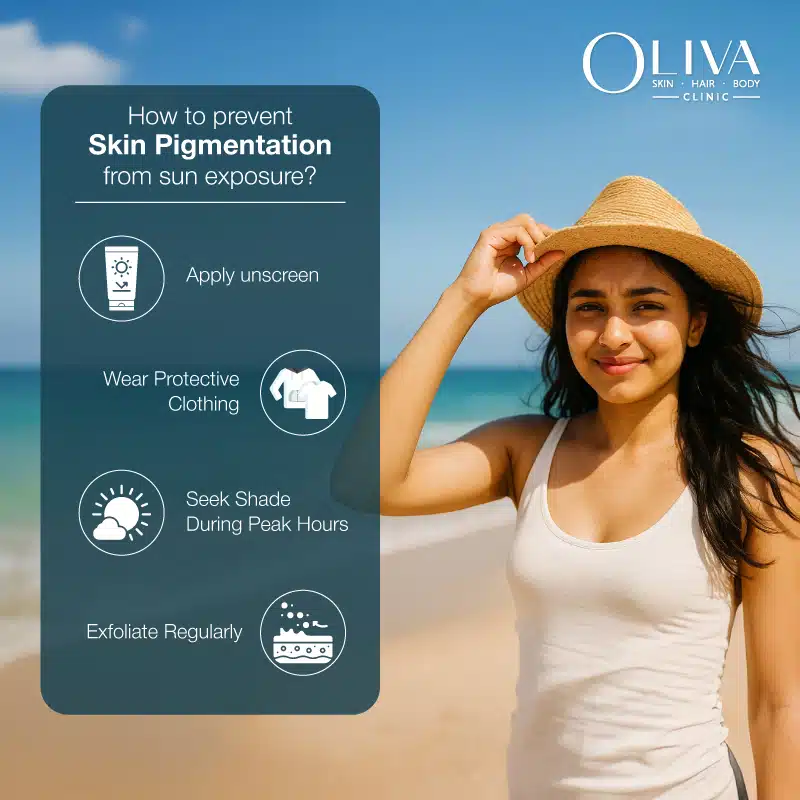
Skin Pigmentation Due to Sun Exposure: Causes, Treatments & Prevention

How to Remove Dark Spots Caused by Pimples: Dermatologist-Approved Solutions
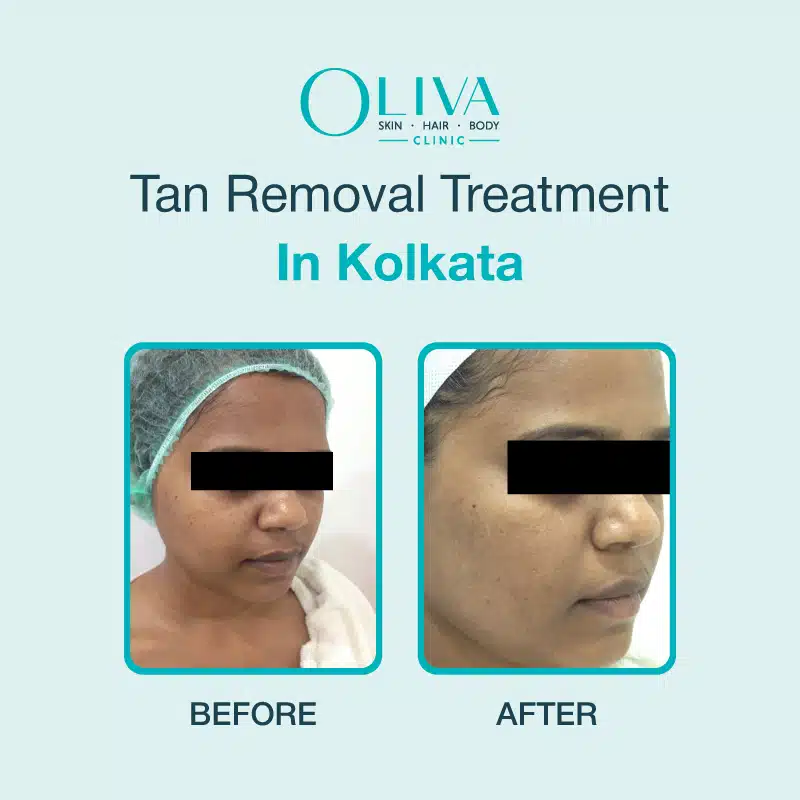
Tan Removal Treatment in Kolkata: Cost, Results & Procedure
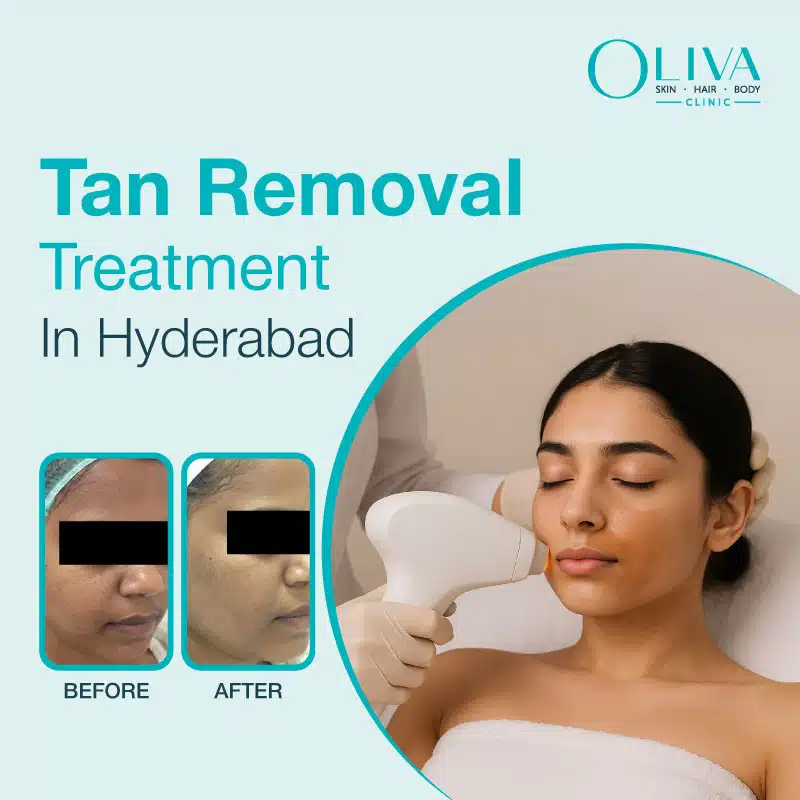
Tan Removal Treatment in Hyderabad: Cost, Results & Procedure
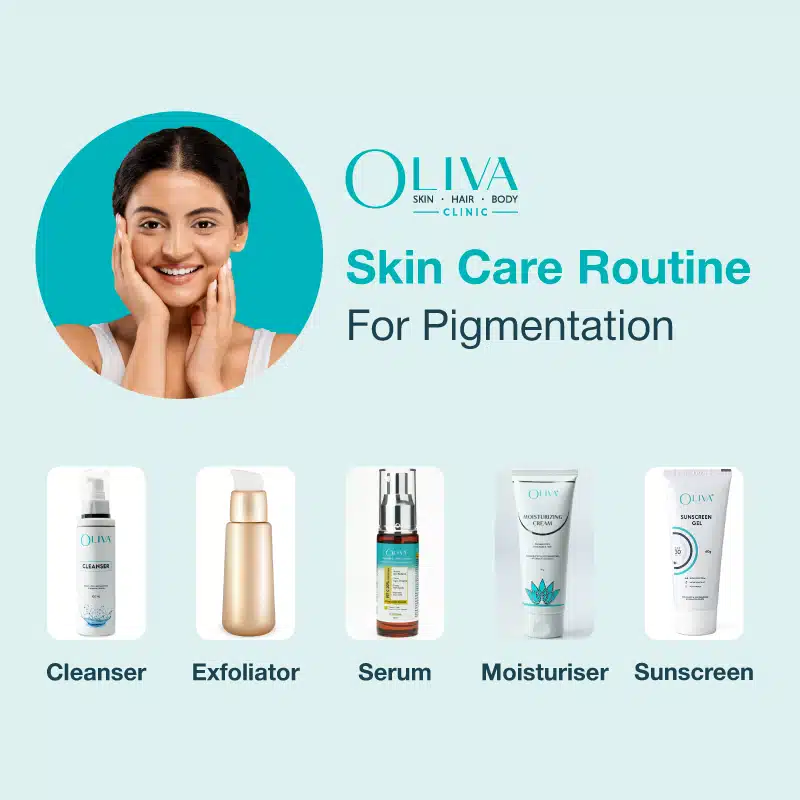
Skin Care Routine for Pigmentation: Expert Guide for Clearer & Even-Toned Skin

